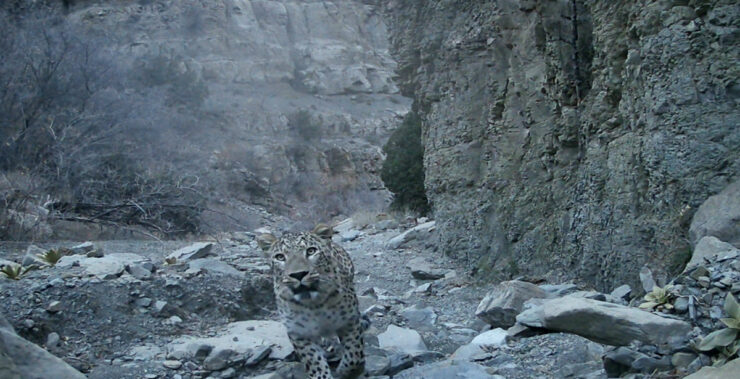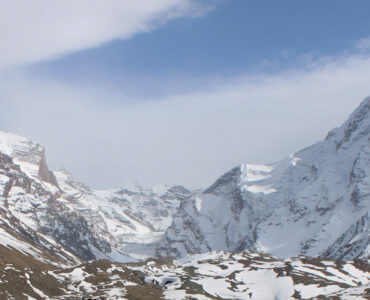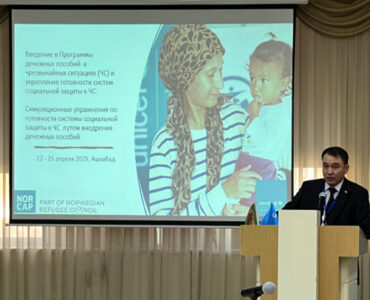In 2023 several international researchers in collaboration with researchers from Turkmenistan conducted an Assessment of Wildlife and Protected Areas of Turkmenistan. The assessment was done with the help of the protected areas staff and rangers, the Balkan Department of Environment and the Ministry of Environmental Protection of Turkmenistan along other government bodies and international organizations and donors.
While Turkmenistan hosts some iconic and endangered species, unique desert and mountain ecosystems, they are increasingly under pressure due to both human-made activities and climate change.
Other challenges authors mentioned include limited data and resources to match “the sheer size of the challenges”, the weak protection measures and management of protected areas, and a lack of regional cooperation.
Here is a brief summary of the National Reserves assessed in this report.
Badhyz Nature Reserve is home for the unique relict pistachio woodlands and Turkmen kulan population. It is currently in danger due to: extensive poaching that threatens endangered species; presence of livestock which degrades the habitat meant for wildlife; locals harvesting pistachio which breaks nature reserves laws; abundance of trash e.g. broken vodka bottles, plastic bottles, and bags which threatens local wildlife, and presence of outdoor domestic cats which threatens endangered birds, reptiles. There is a ranger enforcement unit that is not sufficiently active.
The Kopetdag Nature Reserve is home to more than 40% of the total plant biodiversity of Turkmenistan and many rare plants that are included in the country’s Red Book. The border fence prevents ecological connectivity critical for species such as urial and leopard for maintaining genetic diversity and resilience. The population of leopards is likely to be 60-70 in Turkmenistan. However, poaching is a big threat as 2 leopards were killed near Mary in winter of 2023.
Donate to support Turkmen analysts, researchers and writers to produce factual, constructive and progressive content in their efforts to educate the public of Turkmenistan.
SUPPORT OUR WORKBalkan and Garabogazgol are important ecological corridors for the Persian leopard and its dispersal to Kazakhstan. It also hosts more than 40 mammal species and 30 reptile species. The government has not yet designated the Balkan range and Garabogazgol as protected areas. Both areas are heavily impacted by poaching, overgrazing which degrades the habitat while drought is likely to get worse due to climate change. For example, 2 leopards were killed in 2022 between Balkanabat and Turkmenbashy.
The Sunt Hasardag Nature Reserve is a very important area for leopards and urial. Also, 1-2 brown bears were recorded here for the first time after many years. There is also a small kulan population (10-15 individuals) nearby in Tersakan Valley.
The Kaplankyr Reserve is the largest reserve in Turkmenistan and was recently designated as a UNESCO World Heritage Site. It is currently the beneficiary of a UNDP-funded project. The area is home for kulan, goitered gazelle and caracal.
Koytendag State Nature Reserve is home for rare species such as markhor, pistachio, juniper forests, and “Dinosaur Plateau”. Some of the challenges include: weak management, poaching urial population, livestock grazing, a missed opportunity with the World Heritage designation, lack of transboundary cooperation and cooperation with civil society.
Based on the assessment carried out in these National Reserves the authors call upon the government of Turkmenistan, including the Ministry of Environmental Protection, to:
- Fulfill its obligations under international conventions e.g. the Convention on the Conservation of Migratory Species of Wild Animals (CMS) and the Convention on Biological Diversity (CBD). Currently only 4.4% of the territory of Turkmenistan is formally protected while target 3 under the CBD Global Biodiversity Framework calls for at least 30% by 2030.
- Develop, agree on, and approve “Model Regulations on Ecological Corridors, Buffer/Protected Zones, and OECMs” in accordance with the Law “On Protected Areas”.
- Increase cooperation with Uzbekistan and Kazakhstan, especially among border service to restore ecological connectivity.
- Start enforcing the full ban on livestock inside the Strict Nature Reserves; stop poaching by increasing manpower and infrastructure; raise awareness for the loss of biodiversity; regulate the collection of pistachio; and ban cats at ranger stations in the reserve.
- Support work with local communities on reducing human-wildlife conflict and raise awareness about the need for protection of leopards and other wildlife.
- Build national scientific capacity (i.e. train new young mammalogists, herpetologists, ornithologists, etc.).
- Grant permission to conduct scientific monitoring in the sections beyond the border fence of the Kopetdag, Badhyz, Kaplankyr, Sunt Hasardag and Koytendag reserves.






